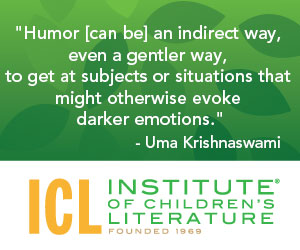1000 N. West Street #1200, Wilmington, DE 19801
© 2024 Direct Learning Systems, Inc. All rights reserved.

We teach our students how to write and get published!
View our Course Catalog >

Begin in Silence
Good dialogue requires preparation. So the first steps occur before your characters open their mouths. It begins with getting to know your characters and deepening your understanding of them. One of the most frequent problems newer writers face when penning dialogue is how to make all the characters sound different. The answer isn’t in the dialogue tricks. It’s in the characters.
Write This
Imagine writing a scrap of dialogue featuring you and your closest friends or family. In fact, you might even want to try this as a dialogue exercise if you’re really struggling with it. Imagine you’re walking in on three of your closest friends (or three members of your family) having a lively discussion (or even an argument) over something that is important to them. Write that scene. Think about a statement or question that your dear friend or family member would say when under pressure. Does this person always try to deflect by jumping on someone else? Is this person a chronic “apologizer” who says she’s sorry for things even when they aren’t her fault? Is this person a peacemaker, trying to calm the other two down? You know this person. How would she/he act in this situation. Now, pick a second person––how would she/he act (or react) to the statement of the first person? Keep this up until the argument or dialogue reaches a conclusion that you believe could happen in real life.
Now, that was a lot easier than some of the dialogue you’ve been trying to write for your stories, isn’t it? Do you know why? Of course, it’s because you know these people so well. They’re real people you know and love, and you know how they react to stress and how they interact with others. And that is the key to good dialogue—it isn’t that you need to give everyone some arbitrary speech quirk. It’s that you need to make your characters real for you, so real that you can hear the voices in your imagination just as you can when imagining a conversation between real friends or family members.
Keep in mind that the more different you make your characters, the easier it will be to create interesting dialogue for them. A group that is very stoic and unemotional is going to be much harder to write for than a group with one very stoic, unemotional person, one hyper chatterbox, and one bad-tempered grouch. Some characters are just naturally going to come into conflict, and conflict makes for dynamic dialogue. So step one is to imagine your characters complexly. Spend time with these people. Think about them in situations outside the ones you’re putting in the story. Ask yourself questions about them. The more you know them, the more easily they’ll speak on the page.
Plan with Purpose
Every bit of dialogue in your story really needs to do two things at the same time. One of the things will be a plot thing. The dialogue will (in some way) move us along in the plot. It will affect change. It may be a tiny change (for instance, the dialogue might reveal a teensy clue that will become oh so important later or the dialogue might get the characters moving in a new direction). Or it may be a big change (a character reveals something so startling that it radically changes how the other characters interact with him/her). But the dialogue will also do a character thing. It will help us to understand these characters better.
There are few things that are better at revealing character than dialogue because what we say is such a big part of showing who we are.
Dialogue can also inform, but if a conversation is there solely to inform, then the dialogue is almost surely going to feel stilted, flat, and dull. No one likes being lectured and that includes readers. But if you can slip in tiny sips of exposition (information) into the dialogue in a way that fits the flow of the conversation, then dialogue is a great sneaky way to do that without killing the forward momentum of the story.
Let’s look at an example. Let’s imagine we’re writing a story about a family who goes every year to a cabin in the woods for vacation. Imagine we need to reveal that one of the two brothers in the scene tends to wet the bed. We could just do it in internal monologue by the character as he muses on the horror of being a bedwetter, or we could do it through dialogue and conflict with the brother. Usually dialogue is the more dynamic way to handle such a revelation.
Joel flung his backpack up on the top bunk, but his little brother rushed over and grabbed the strap, tugging it.
“You slept on top last time,” Ben shouted. “It’s my turn.”
Joel put his hand on his brother’s chest, pushing. “No way. I don’t need to get rained on in the night.”
Ben narrowed his eyes and glared at his brother. “I don’t always do that.”
“Right.”
See how the “telling” part of this feels like real dialogue and not like “just letting the reader know something.” That’s key to good sneaky exposition.
More Than Voices
Another important characteristic of dynamic dialogue is that it is made up of more than voices. Dialogue needs to take place somewhere. And the best dialogue tends to happen when the characters are doing something. Now the “something” might be important to the plot like creeping through a dark, dank tunnel on the way to a treasure. Or it might be something that merely shows us something about the character, such as having the dialogue happen while the main character is sitting on the porch shelling peas with her cousin. But by giving the characters a place to be and an activity to do, you get a number of important side benefits: a sense of reality to the scene, an additional way of showing emotion, and a way to show who is speaking without speech tags (which can add a nice variety to the scene).
Let’s look at a snippet of dialogue from the cousins on the porch:
Cassie pushed her thumb into the seam on the pea pod until the two sides sprang apart, showing off a row of plump peas inside. With the same thumb, she herded the peas into the faded yellow plastic bowl and tossed the empty pod into the grass. Shading her eyes with one arm, she watched her cousin Annie trudge across the yard, a bucket of chicken feed in one hand.
Annie flopped on the porch. She nodded toward the bowl. “That’s usually my job.”
“Do you want to take over?”
Annie barked out a laugh. “Hardly. Nope, Gran caught you, so you’re stuck with it.”
Cassie shrugged as picked up the next pod. “I don’t mind. It’s fun.”
Annie raised her thick eyebrows high. “Fun? You have weird ideas about fun.”
She fished in the bowl and scooped out a few peas. She popped them in her mouth.
“Are raw peas good?” Cassie asked.
Again the eyebrows went up. “You never ate raw peas?” Cassie shook her head and Annie snorted. “City folks are weird.”
Do you see how the conversation reveals things about these cousins? At no point do we tell the reader any information directly, but you do learn things. You learn that these two don’t know one another overly well. We learn that Cassie is a city girl. But we also get a feel for these girl’s personalities. We begin to make assumptions about them. Good dialogue feels like we’re eavesdropping on a real moment in time, which is why anything you convey to the reader needs to be done with subtlety. Adding in both place and action is hugely helpful in helping you make the dialogue feel real.
So next time you’re struggling with dialogue remember these tips:
1. Know your characters well.
2. Know the thing you need the conversation to do.
3. Give the dialogue a place to happen.
4. Give the characters a physical task to deepen the sense of reality.
Do that and your dialogue will be more engaging and believable. And easier to write as well. You can’t get much better than that.
With over 100 books in publication, Jan Fields writes both chapter books for children and mystery novels for adults. She’s also known for a variety of experiences teaching writing, from one session SCBWI events to lengthier Highlights Foundation workshops to these blog posts for the Institute of Children’s Literature. As a former ICL instructor, Jan enjoys equipping writers for success in whatever way she can.
1000 N. West Street #1200, Wilmington, DE 19801
© 2024 Direct Learning Systems, Inc. All rights reserved.
1000 N. West Street #1200, Wilmington, DE 19801
© 2024 Direct Learning Systems, Inc. All rights reserved.
1000 N. West Street #1200, Wilmington, DE 19801
© 2024 Direct Learning Systems, Inc. All rights reserved.
1000 N. West Street #1200, Wilmington, DE 19801
© 2025 Direct Learning Systems, Inc. All rights reserved.
1000 N. West Street #1200, Wilmington, DE 19801
©2025 Direct Learning Systems, Inc. All rights reserved. Privacy Policy.